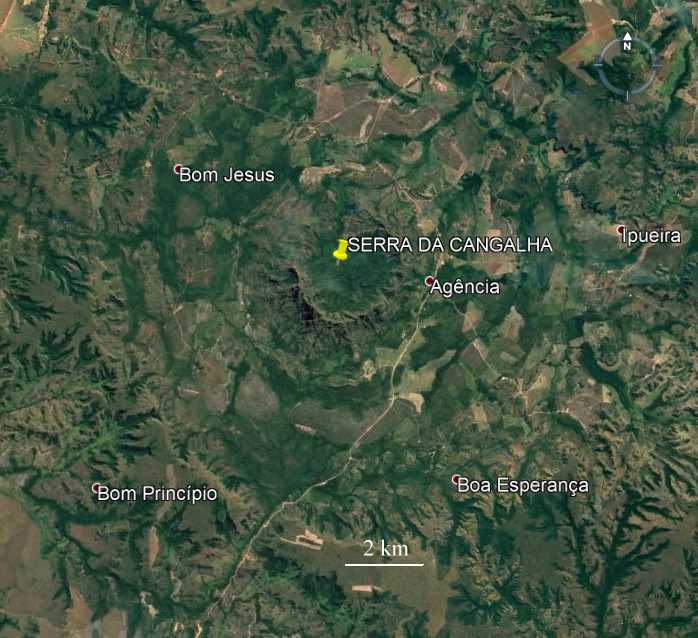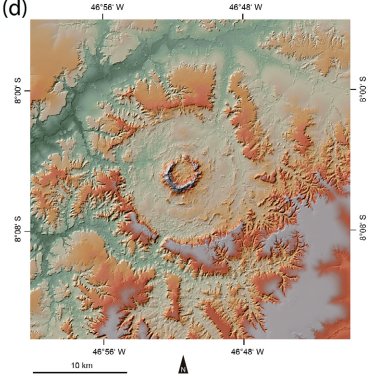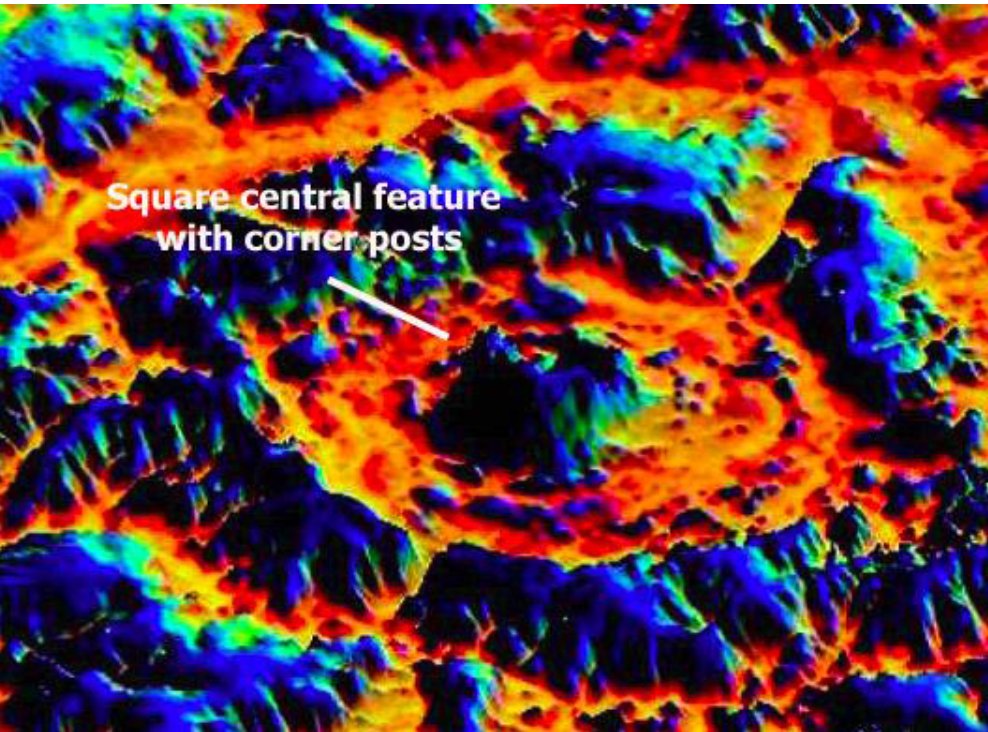- Зоткин И.Т., Дабижа А.И. (1982). Эволюция метеоритного кратера как процесс случайных перемещений // Метеоритика, Issue 40, с. 82-90
- Фельдман В.И. (1987). Каталог астроблем и метеоритных кратеров Земли // Метеоритика, Issue 46, с. 154-171
- Алексеев А.С. и др. (1991). Оценки частоты падения небесных тел на Землю, исследование возможности заблаговременного их обнаружения и изменения траекторий. - Отчёт по НИР, АН СССР ВЦ, Новосибирск , 128 с.
- Хазанович-Вульф К.К. (2011). Астероиды, кимберлиты, астроблемы. - Санкт-Петербург, 192 с.
- (1988). Astronauts guide to terrestrial impact craters // Space Shuttle Earth Observation Project, Lunar and Planetary Institute (March 1988).
- Graham B. and H. (1985). Catalogue of Meteorites. - 4th Edition
- Grieve R.A.F. (1987). Terrestrial impact structures // Ann.Rev.Earth Planet.Sci., Vol.15, p. 245-270
- Hodge P.W. (1994). Meteorite craters and impact structures of the Earth // Cambridge University Press , 122 рр.
- Zvonaric S. (1996). Hollow central uplift of the crater - submarine impact indicator? // Role Impact Process. Geol. and Biol. Evol. Planet Earth: Int. Workshop, Postojna, Sept. 27 - Oct. 2, 1996: Abstr. Geol. West Sloven. Field Guide , Ljubljana, P. 102-103
- Castelo B.R.M.G. (2000). Some evidences on northeast Brazilian impact structures (astroblemes) // The 31st International Geological Congress, Rio de Janeiro, Aug. 6-17, 2000, Rio de Janeiro: Geol. Surv. Braz., P. 4479
- Calvin J. Hamilton (2001). Terrestrial Impact Crater Structures.
- Adepelumi A.A., Fontes S.L., Schnegg P.A., Flexor J.M. (2005). An integrated magnetotelluric andaeromagnetic investigation of the Serra da Cangalha impact crater, Brazil // Phys. Earth and Planet. Inter., Vol.150, No.1, P. 159-181
- Reimold W.U. et al. (2006). Investigation of Shuttle Radar Topography Mission data of the possible impact structure at Serra da Cangalha, Brazil // Meteoritics & Planetary Science, v. 41, no. 2, p. 237√246.
- Osinski G.R. (2006). The geological record of meteorite impacts // 40th ESLAB First International Conference on Impact Cratering in the Solar System, 8-12 May 2006., Noordwijk,The Netherlands
- Kenkmann T., Vasconcelos M., Reimold W.U., Crost A. (2010). The structure of the Serra da Cangalha impact crater, Tocantins, Brazil // European Planetary Science Congress 2010, held 20-24 September in Rome, Italy. p.846.
- Vasconcelos M.A.R., Goes A.M., Crosta A.P., Kenkmann T., Reimold W.U. (2010). Serra da Cangalha Impact Structure, Parnaiba Basin, Northeastern Brazil: Target Characterization and Stratigraphic Estimates of Uplift // 41st Lunar and Planetary Science Conference, held March 1-5, 2010 in The Woodlands, Texas. LPI Contribution No. 1533, p.1868.
- Acevedo D. at al. (2011). Meteorite Impact Craters in South America: A Brief Review // Revista Brasileira de Geomorfologia - v.12, n.3
- Kenkmann T., Vasconcelos M.A.R., Crosta A.P., Reimold W.U. (2011). The complex impact structure Serra da Cangalha, Tocantins State, Brazil // Meteoritics & Planetary Science, Volume 46, Issue 6, pp. 875-889.
- Vasconcelos M.A.R., Crosta A.P., Reimold W.U., Goes A.M., Kenkmann T., Poelchau M.H. (2013). The Serra da Cangalha impact structure, Brazil: Geological, stratigraphic and petrographic aspects of a recently confirmed impact structure // Journal of South American Earth Sciences, Volume 45, p. 316-330.
- Vasconcelos M.A.R., Leite R.E., Crosta P.A. (2012). Contributions of gamma-ray spectrometry to terrestrial impact crater studies: the example of Serra da Cangalha, northeastern Brazil // Geophys. Res. Lett., Vol.39, No.4, PL04306/01
- Vasconcelos M., Crosta A.P., Reimold W.U., Goes A.M. (2013). The Serra da Cangalha impact structure, Brazil: Geological, stratigraphic and petrographic aspects of a recently confirmed impact structure // Journal of South American Earth Sciences 45:316-330
- Acevado R.D., Rocca M.C.L., Ponce J.F., Stinco S.G. (2015). Impact Craters in South America // Springer Verlag.
- BURN W. (2015). POLYGONAL CRATER FORMATION BY ELECTRICAL DISCHARGES // New Concepts in Global Tectonics Journal, V. 3, No. 2, June 2015.
- Ayala Sanchez R. (2017). Modelizacion geofisica de crateres de impacto en Bolivia.
- Kenkmann T. (2021). The terrestrial impact crater record: A statistical analysis of morphologies, structures, ages, lithologies, and more // Meteoritics & Planetary Science 56, Nr 5, 1024-1070

Спутниковая фотография кратера из Google Earth.

(Kenkmann, 2021).

Serra da Cangalha crater, Brazil (Image: Reimold et al., 2006).
| |
Обзор статей (из РЖ ВИНИТИ "Геология и геофизика"):
Обоснование гипотезы об углублении в центр. поднятии кратера как индикаторе подводного удара. Рассмотренная модель образования углубления в центр. поднятии кратеров базируется на динамике распространения цунами после затопления кратера водой и выбросе газовых и водных струй. Взаимное действие цунами и ударного взрывного гейзера как бы вывинчивает вертикальную часть поднятия. Последующие процессы постепенно уничтожают центр. поднятие подводных кратеров. Из 150 наиболее эродированных ударных структур Земли только несколько имеют отношение размера внутреннего кольца к внешнему в интервале от 1:4 до 1:6. Примерами подводных кратеров являются структуры Сьерра-де-Кангала с возрастом 220 млн лет и купол Арагуипа с возрастом ~250 млн. лет. Кратеры с аналогичной структурой отсутствуют на др. телах Солнечной системы
(Zvonaric, 1996).
Сообщение об обнаружении и параметрах новых астроблем на северо-востоке Бразилии, крупнейшими из которых являются Araguainha (диаметр 40 км), Cangaiha (12 км), Colon (3 км), Riachao (4 км), S. M. Tapuio (25 км), S. Marta (12 км) Vargeao (12 км). Также обнаружены структуры Picos, B. Jesus, S. P. Crentes, A. Turiaqu, A. Araguaia, E. Martins и Bandeira. По морфологическим, петрологическим и структурным аспектам Araguainha, Cangaiha, S. M. Tapuio и S. Marta отнесены к меторитным кратерам
(Castelo Branco, 2000).
Сложный ударный метеоритной кратер Серра-да-Кангалха, диаметром ~13 км, выполнен в осадочных породах девона-карбона-перми, штат Токантинс, с.-в. Бразилии. Аэрогаммаспектрометрия высокого разрешения в каналах излучения K, Th и U проведена в зонах центрального поднятия, кольцевого бассейна и периферии кратера. Аномалии К усилены двумя методами. Выделены аномалия K в кольцевом бассейне кратера, повышенное концентрации Th и U вокруг вала кратера, повышенная концентрация U в зоне центрального поднятия кратера. Аномалии K могут быть связаны с повышенными содержаниями глинистых минералов и мусковита. Аномалии Th и U связаны с распределением тяжелых минералов. Планируется детальная геолого-минералогическая полевая схема кратера для объяснения выделенных аномалий
(Vasconcelos, Leite, Crosta, 2012).
На главную





